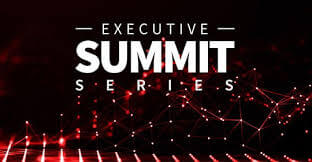The CDW Executive Summit serves as a crucial meeting point for IT leaders and decision-makers aiming to navigate the ever-evolving technology landscape and create strategic visions for their organizations. The 2025 CDW Executive SummIT offers opportunities to explore future-ready solutions and services to positively impact organizational outcomes. Attendees engage with speakers and peers in real time to learn how IT leaders are evolving and excelling in the current environment. Recent summits have emphasized key themes, providing attendees with actionable insights to drive innovation, enhance security, and optimize their technology investments.
A consistent thread throughout recent CDW Executive Summits is the intense demand for and strategic implementation of Artificial Intelligence (AI). Organizations are increasingly looking to AI to improve efficiency, productivity, and unlock new avenues for innovation. IT leaders report that internal stakeholders are pushing for rapid AI adoption, making a well-defined strategy essential for maximizing success. This strategy must translate into practical ways to integrate AI into both new and existing workflows. Discussions revolve around how to support rapid innovation while mitigating risks, emphasizing the importance of intentionality in applying AI to achieve maximum results. Attendees explore what an AI-centric enterprise looks like and the keys to building an innovative, efficient, and secure digital strategy in the "digital economy" and "Intelligent Age". This includes understanding the necessary computing power, energy sources, large language models, and other machine learning tools required to fully harness AI.
The summit also tackles the challenges and opportunities presented by hybrid work environments. As more companies embrace hybrid models, ensuring a seamless and equitable experience for both in-office and remote workers is paramount. Organizations that fail to deliver this risk losing top talent. Attendees gain insights into managing the complexities of hybrid work, recognizing that it demands more than simply replicating office setups for remote employees.
Cybersecurity remains a central focus, particularly in the context of emerging technologies like AI. The security landscape is rapidly changing, and organizations adopting AI could inadvertently introduce vulnerabilities. Experts share insights on implementing AI securely, balancing innovation with risk management. Key considerations include data privacy, securing mobile devices, and fostering a culture of security within the organization. Discussions also cover how to modernize cybersecurity programs in the face of AI-fueled sophisticated attacks like spear phishing.
Data governance and a strong data culture are also highlighted as foundational elements for successful AI adoption. IT leaders are recognizing the need for high-quality data to drive AI and machine learning models. A strong data culture requires critical thinking about AI outputs to avoid consuming inaccurate or poor-quality data. Discussions cover the importance of clean data to prevent AI hallucinations and other potential problems, emphasizing that organizations should carefully examine the data they use in AI initiatives.
Attendees also delve into infrastructure, security, the Internet of Things (IoT), and platform engineering. Experts provide guidance on rightsizing investments in these areas, exploring emerging trends and use cases in agentic AI, platform engineering, and SecOps, IoT, and cyber resilience. Furthermore, the summit addresses the "human side of transformation," acknowledging that technology shifts can be disruptive to employees. Experts share strategies for effective change management, emphasizing communication and collaboration to get executive buy-in for tech initiatives by vetting business use cases and categorizing projects effectively.
In essence, the CDW Executive Summit aims to equip IT leaders with the knowledge and strategies necessary to create a future-ready technology vision. It provides a platform for learning, networking, and collaboration, enabling organizations to navigate the complexities of the modern IT landscape and achieve their strategic goals.

















